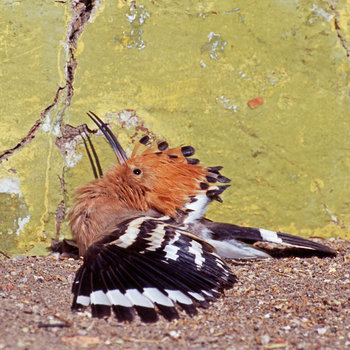
Hoopoe
- Like the cuckoo, the hoopoe's name is onomatopoeic, as it is named after its soft, far-carrying song poo-poo-poo.
- Hoopoes are largely silent outside the breeding season, but the male will utter his monotonous but attractive song for long periods in the spring and summer, often taking part in song duels with neighbours.
- Though migrants hoopoes are reported in Britain every year, it is rare for pairs to nest here.
- Hoopoes like warm temperatures, so are most numerous around the Mediterranean, but climate change may well see their breeding range move north.
- Spain has by far the biggest European population, but it is also common in Portugal, southern France, Italy, the Balkans and Greece.
- Hoopoes thrive best in areas of low-intensity farming with minimum use of pesticides.
- The diet is almost exclusively animals, with large insects, their larvae and pupae, most important.
- Hoopoes are particularly enthusiastic foragers of animal droppings and dung heaps, searching for beetles. They use their long, decurved beak to probe the ground.
- They like to forage on bare ground or where grass is closely cropped. In England, migrants have a reputation for favouring vicarage lawns.
- When feeding, hoopoes can often be closely approached as they take little notice of humans. When disturbed, they will take flight, invariably erecting their crest when they land.
- Holes in trees, banks or stonewalls provide the favoured nest sites, but they will use suitable nest boxes.
- Like those of most hole-nesting birds, the hoopoe's eggs are pale and unmarked, while incubation is undertaken exclusively the by the female.
- Nest sanitation is not a hoopoe strength: the adults fail to remove any of their ofsprings' droppings, so the nest soon becomes fouled and smelly.
- Experienced human nest finders can locate an occupied hoopoe’s nest by following their noses.
- Hoopoes are partially migratory. Most birds in the north of their range go south for the winter, as do many southern breeding birds, but a few remain on the breeding grounds all year round.
- No other European bird can be confused with the hoopoe, but it does have a very similar cousin in Africa.
- Hoopoes are widespread in India, and have been recorded on Mt Everest at 26,000ft.
- The male and female have almost identical plumage, but the female tends to be slightly duller than her mate.
- Juvenile hoopoes, fresh from the nest, look much like the female.
- Many superstitions surround the hoopoe, which is thought to be the favourite and confidant of King Solomon.
- Hearing a singing hoopoe before wine pressing is meant to foretell a good vintage.

